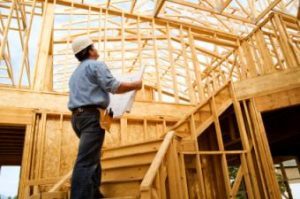 Things are looking up—at least slightly according to the monthly New Residential Construction report released Wednesday by the U.S. Census Bureau. Privately owned housing units, housing starts, and housing completions were all up from May.
Things are looking up—at least slightly according to the monthly New Residential Construction report released Wednesday by the U.S. Census Bureau. Privately owned housing units, housing starts, and housing completions were all up from May.
According to First American Chief Economist Mark Fleming, this is a small step toward alleviating the current housing shortage.
“Permits and Starts increased 5.1 percent and 2.1 percent respectively compared to a year ago,” Fleming said. “The pace of single-family housing starts, 849,000 (SAAR), is particularly important as it represents near-term new supply that the housing market is lacking.”
Greg Parsons, CEO and Head of Investment Committee at Semper, an investment management firm specializing in mortgage- and asset-backed securities, asset-based lending, and other structured credit investments, said the increase is not only going to help alleviate the shortage, but is likely caused by the imbalance between homes for sale and demand for new homes to purchase.
“The need to balance the growing demand for housing with a dwindling supply, coupled with a strong economy, has given builders an opportunity to break ground and build more homes,” Parsons said. “To the extent that housing starts relieve some of the pressure on home price appreciation, home affordability will remain attractive.”
Housing completions were at a seasonally adjusted rate of 1,203,000 with units in buildings with five units or more at 396,000. However, the concern isn’t with completions, it’s starts that could really affect things going further.
“Without more increases in housing starts, the inventory of homes for sale is likely to decrease further,” Fleming said. “The amount of completions necessary just to keep pace with growing millennial demand is probably around 1.5 million units. Housing completions at 1.2 million (SAAR) this month falls short of what is needed. Short supply relative to increasing demand is driving nominal prices higher, yet home purchasing-power is also twice as high as it was in 2000. Even with all the recent nominal price appreciation, real home prices remain 11 percent more affordable than before the housing boom.”
In line with those concerns, the recent employment situation report reported a decline in residential construction jobs by 1,500 jobs between May and June. This could also lend itself to declines.
“Building a home does not readily lend itself to outsourcing and automation,” Fleming said. “Home building still requires manual labor as a key input into the production process. It’s very hard to increase housing starts without increasing residential construction employment. This month’s decline and, more importantly, a lack of growth in residential construction jobs is a significant impediment to increasing the pace of housing starts.”

 theMReport.com Your trusted source for mortgage banking news
theMReport.com Your trusted source for mortgage banking news








